Related Research Articles

The Divine Comedy is an Italian narrative poem by Dante Alighieri, begun c. 1308 and completed around 1321, shortly before the author's death. It is widely considered the pre-eminent work in Italian literature and one of the greatest works of world literature. The poem's imaginative vision of the afterlife is representative of the medieval worldview as it existed in the Western Church by the 14th century. It helped establish the Tuscan language, in which it is written, as the standardized Italian language. It is divided into three parts: Inferno, Purgatorio, and Paradiso.

Arnaut Daniel was an Occitan troubadour of the 12th century, praised by Dante as "the best smith" and called a "grand master of love" by Petrarch. In the 20th century he was lauded by Ezra Pound in The Spirit of Romance (1910) as the greatest poet to have ever lived.

Purgatorio is the second part of Dante's Divine Comedy, following the Inferno and preceding the Paradiso. The poem was written in the early 14th century. It is an allegory telling of the climb of Dante up the Mount of Purgatory, guided by the Roman poet Virgil – except for the last four cantos, at which point Beatrice takes over as Dante's guide. Allegorically, Purgatorio represents the penitent Christian life. In describing the climb Dante discusses the nature of sin, examples of vice and virtue, as well as moral issues in politics and in the Church. The poem posits the theory that all sins arise from love – either perverted love directed towards others' harm, or deficient love, or the disordered or excessive love of good things.

Sordello da Goito or Sordel de Goit was a 13th-century Italian troubadour. His life and work have inspired several authors including Dante Alighieri, Robert Browning, and Samuel Beckett.

Constance II of Sicily was Queen consort of Aragon as the wife of Peter III of Aragon and a pretender to the Kingdom of Sicily from 1268 to 1285. She was the only daughter of Manfred of Sicily and his first wife, Beatrice of Savoy.

Ugolino Visconti, better known as Nino, was the Giudice of Gallura from 1275 or 1276 to his death. He was a son of Giovanni Visconti and grandson of Ugolino della Gherardesca. He was the first husband of Beatrice d'Este, daughter of Obizzo II d'Este. His symbol was a cock.
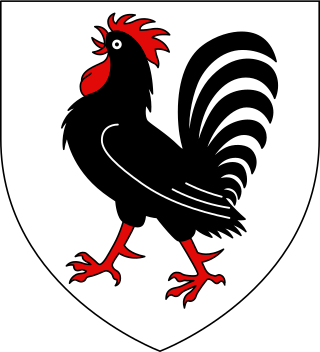
Joannaof Gallura, also known as Giovanna Visconti, was the last titular Judge (giudicessa) of Gallura. Joanna claimed her rights in Sardinia to no avail and eventually sold them to her relatives, the Visconti of Milan, who later sold them to the Crown of Aragon. She is mentioned passingly by Dante Alighieri in the Divine Comedy. Her father, a friend of Dante's, but consigned to Purgatory with the other negligent rulers, asks her to be reminded of him.

Paradiso is the third and final part of Dante's Divine Comedy, following the Inferno and the Purgatorio. It is an allegory telling of Dante's journey through Heaven, guided by Beatrice, who symbolises theology. In the poem, Paradise is depicted as a series of concentric spheres surrounding the Earth, consisting of the Moon, Mercury, Venus, the Sun, Mars, Jupiter, Saturn, the Fixed Stars, the Primum Mobile and finally, the Empyrean. It was written in the early 14th century. Allegorically, the poem represents the soul's ascent to God.
Bonagiunta Orbicciani, also called Bonaggiunta and Urbicciani, was an Italian poet of the Tuscan School, which drew on the work of the Sicilian School. His main occupation was as a judge and notary. Fewer than forty of his poems survive.

Casella was an Italian composer and singer, none of whose works have survived.
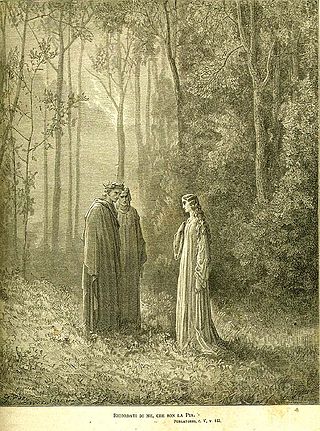
Pia de' Tolomei was an Italian noblewoman from Siena identified as "la Pia," a minor character in Dante's Divine Comedy who was murdered by her husband. Her brief presence in the poem has inspired many works in art, music, literature, and cinema. Her character in the Divine Comedy is noted for her compassion and serves a greater program among the characters in her canto, as well as the female characters in the entire poem.
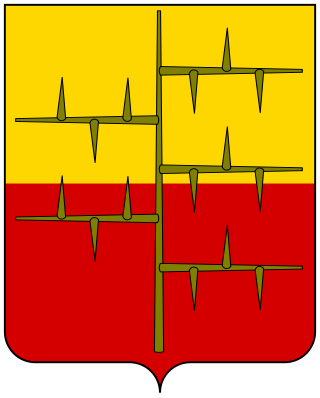
Corrado Malaspina, was an Italian nobleman and landowner.

Matelda, anglicized as Matilda in some translations, is a minor character in Dante Alighieri's Purgatorio, the second canticle of the Divine Comedy. She is present in the final six cantos of the canticle, but is unnamed until Canto XXXIII. While Dante makes Matelda's function as a baptizer in the Earthly Paradise clear, commentators have disagreed about what historical figure she is intended to represent, if any.
Alagia Fieschi, also known as Alagia di Nicolò Fieschi and Alagia di Fieschi, was the daughter of Count Nicolò Fieschi and niece of Pope Adrian V. Alagia married Moroello Malaspina in the 1280s and they had five children. In Dante Alighieri's Divine Comedy, Alagia is remembered by Adrian V at the end of his conversation with Dante as the only virtuous woman in his family whom he wishes to pray on his behalf. Alagia’s mention as the only virtuous person in her family reflects Dante’s view about Alagia's family's actions involving the Malaspina family. In addition, Alagia is celebrated by Dante through his portrayal of her as a virtuous woman whose prayer can contribute to Adrian V's journey of salvation.
Nella Donati was a medieval noblewoman from Florence, Italy. She is primarily known because of Dante Alighieri's treatment of her relationship to her husband, Forese Donati, in the Divine Comedy and in a series of poems Dante exchanged with Forese.

Bonconte I da Montefeltro was an Italian Ghibelline general. He led Ghibelline forces in several engagements until his battlefield death. Dante Alighieri featured Montefeltro as a character in the Divine Comedy.
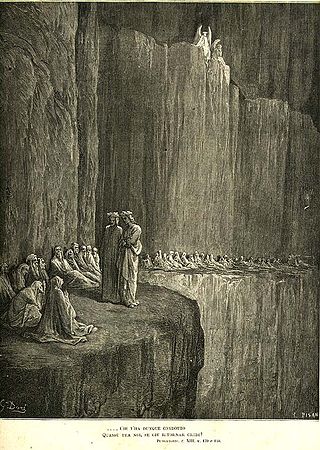
Sapia Salvani was a Sienese noblewoman. In Dante Alighieri's Divine Comedy, she is placed among the envious souls of Purgatory for having rejoiced when her fellow Sienese townspeople, led by her nephew Provenzano Salvani, lost to the Florentine Guelphs at the Battle of Colle Val d'Elsa.

Beatrice d’Este was an Italian noblewoman, now primarily known for Dante Alighieri's allusion to her in Purgatorio, the second canticle of the Divine Comedy. Through her first marriage to Nino Visconti, she was judge (giudichessa) of Gallura, and through her second marriage to Galeazzo I Visconti, following Nino’s death, lady of Milan.
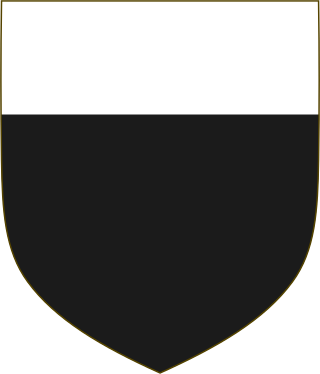
Gaia da Camino was an Italian noblewoman and poet hailing from Treviso, Italy. Her family was descended from the Lombards. She is mentioned briefly in Dante Alighieri's Divine Comedy.
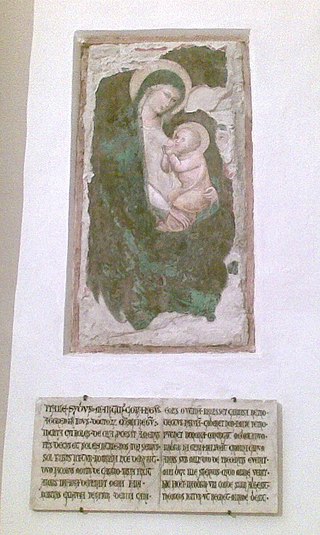
Jacopo del Cassero was a magistrate and condottiero from late medieval Italy. He appears as a character in Dante Alighieri's Purgatorio.
References
- ↑ "MONTEFELTRO, Buonconte di in "Dizionario Biografico"". www.treccani.it (in Italian). Retrieved 2021-04-01.
- ↑ Toynbee, Paget (1898). "The Dante Dictionary" (PDF).
- 1 2 3 4 5 Diaz, Sarah E. (2011). Dietro a lo sposo, sì la sposa piace: Marriage in Dante's 'Commedia'. Ph.D. Dissertation, New York University.
- ↑ "Dante Lab at Dartmouth College: Reader". dantelab.dartmouth.edu. Retrieved 2021-03-31.
- ↑ "Purgatorio 8 – Digital Dante". digitaldante.columbia.edu. Retrieved 2021-04-05.